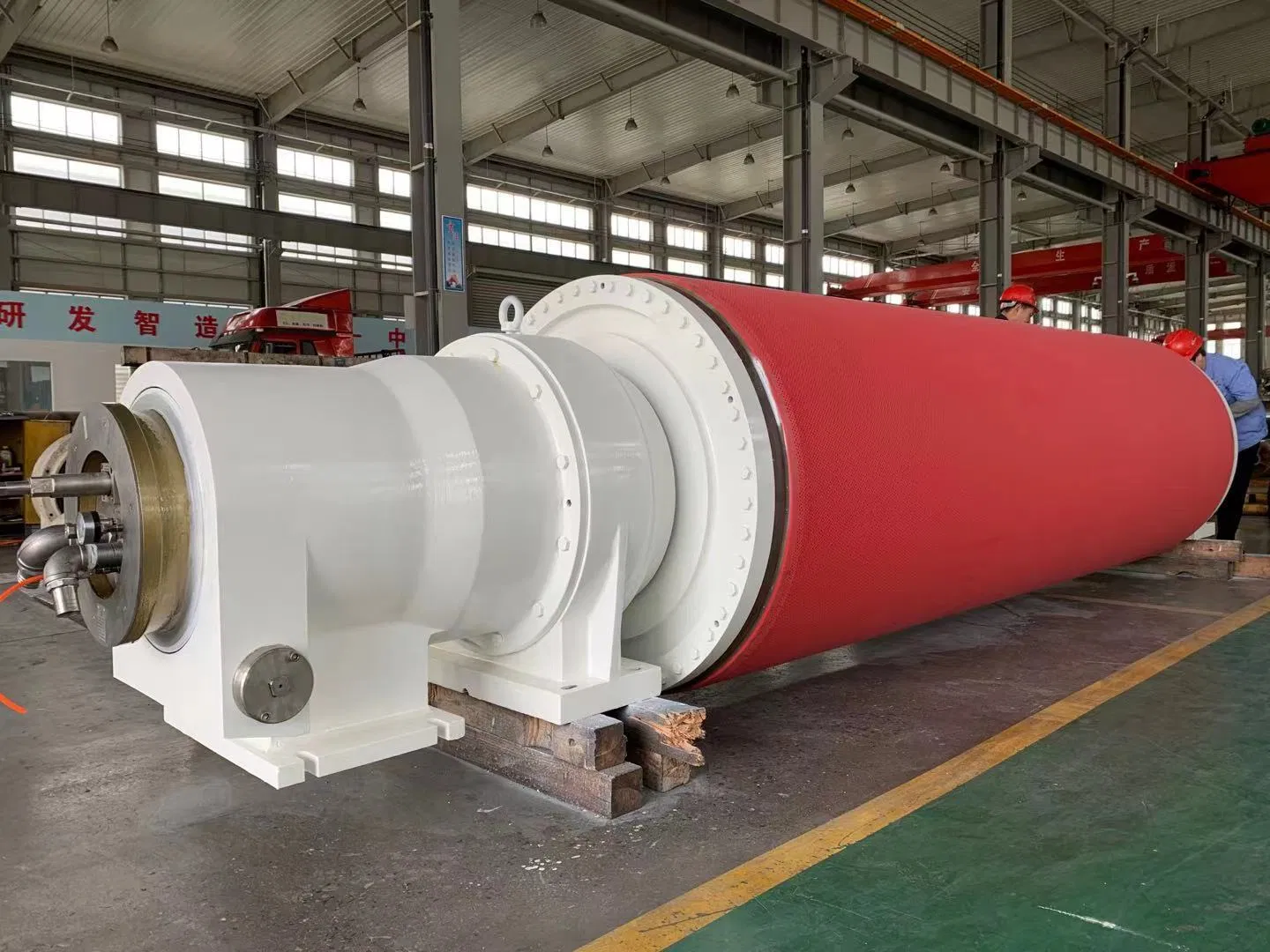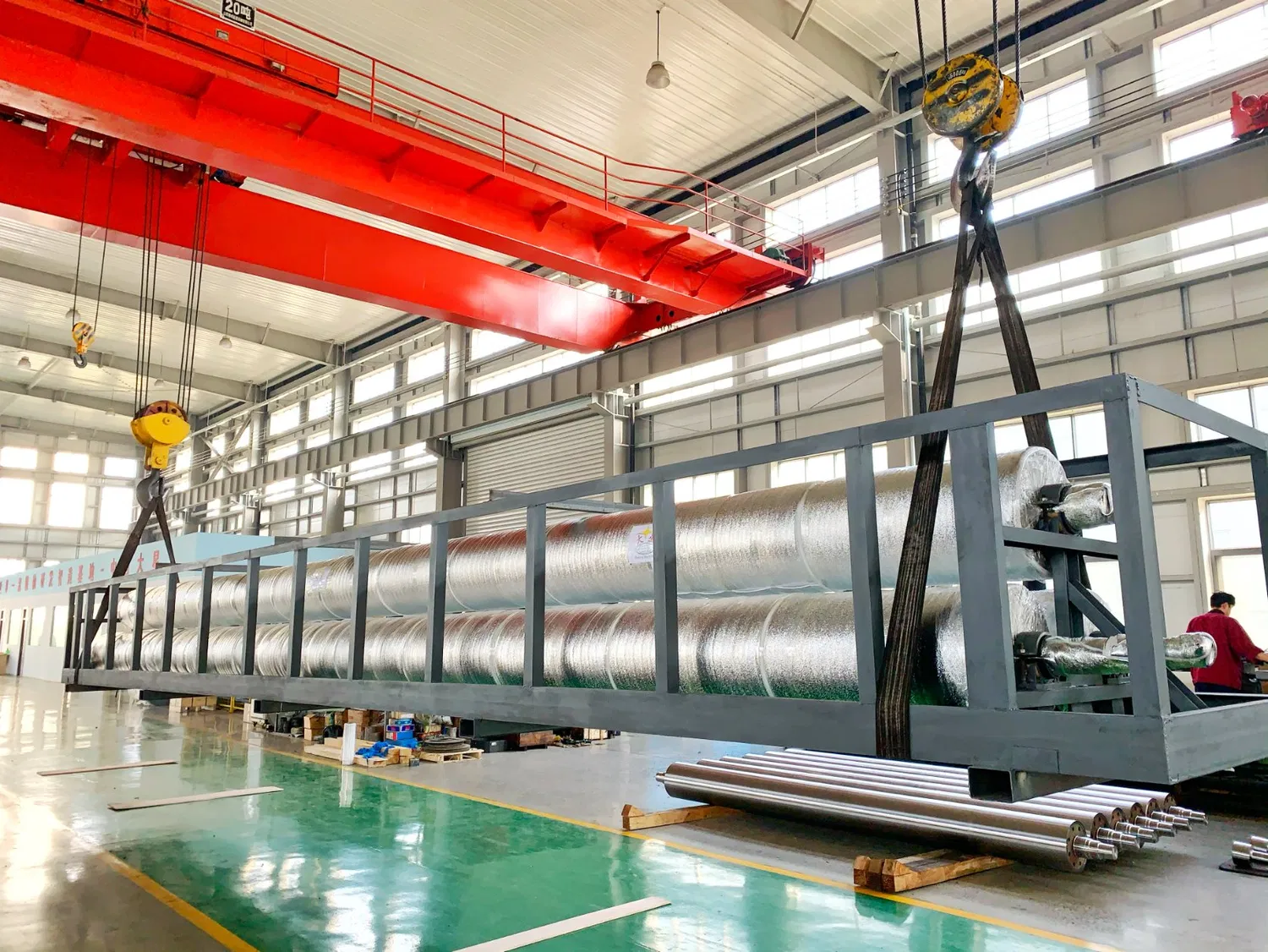In the world of high-speed industrial manufacturing, particularly in papermaking, the removal of water from a fibrous web is a process of both brute force and incredible finesse. At the heart of this critical dewatering stage lies a masterpiece of mechanical engineering: the press roll. While various designs exist, the precision controlled blind hole press roll stands out as a testament to how sophisticated engineering can solve fundamental physical challenges. To be honest, looking at one of these massive, rotating cylinders, it’s easy to underestimate the sheer complexity involved. But beneath its seemingly simple exterior is a world of advanced materials, meticulous manufacturing, and intelligent control systems, all working in concert to achieve one goal: optimal performance.
This article delves into the intricate engineering behind these remarkable components. We will dissect the core principles that make them effective, explore the materials and manufacturing that give them life, and uncover the control systems that grant them their "precision" moniker. It’s a journey from raw metal to a highly intelligent, dynamic machine component that is indispensable to modern industry.
Core Principles: The Function of Blind Hole Press Rolls in Dewatering
To appreciate the engineering, one must first understand the problem. In a paper machine's press section, a wet, fragile sheet of pulp is squeezed between two or more massive rolls. The goal is to mechanically press out as much water as possible before the sheet enters the energy-intensive dryer section. As the rolls create a high-pressure "nip," the water has to go somewhere. With simple, solid rolls, this water can create immense hydraulic pressure within the sheet itself, which not only hinders dewatering but can also crush or damage the delicate fiber structure.
This is where the genius of the blind hole press roll comes into play. Unlike a suction roll, where holes go all the way through and require a complex vacuum system, a blind hole roll features thousands of small holes drilled to a specific depth, but not all the way through the roll shell. The engineering principle is elegantly simple yet effective.
How Blind Holes Manage Hydraulic Pressure
As the sheet enters the nip, the intense pressure forces water out of the fiber web. These blind holes act as miniature reservoirs, providing a void for the expressed water to escape into. This dramatically reduces the hydraulic pressure within the sheet. The water is held in these holes for the brief moment the surface is in the nip. Once that section of the roll rotates out of the nip, the compression is released, and a combination of centrifugal force and the natural expansion of the roll's cover material expels the water, preparing the holes for their next pass through the nip. It's worth noting that the efficiency of this cycle is a key performance indicator.
Many experts agree that for many applications, this design offers a sweet spot between the dewatering capacity of a more complex suction roll and the simplicity of a grooved roll. The blind hole pattern provides more void volume than grooves and, when engineered correctly, offers a more uniform pressure application, which is critical for sheet quality.

The Engineering of the Roll Body: Materials and Structural Integrity
A precision controlled blind hole press roll is, at its core, a heavy-duty structural component that must endure incredible operational stresses. The engineering choices for its core materials and construction are therefore paramount. These rolls can be several meters long and weigh many tons, yet they must operate with unfailing reliability at high speeds under immense pressure.
Material Selection and Shell Construction
The body, or shell, of the roll is typically forged or centrifugally cast from high-strength materials. The choice depends on the specific application, but common options include:
- Cast Iron: Offers excellent vibration damping and good wear characteristics, though it may be susceptible to corrosion in certain chemical environments.
- Steel Alloys: Provide superior strength and toughness, making them suitable for the most demanding, high-load applications. Stainless steel variants are often used for their exceptional corrosion resistance.
- Bronze Alloys: Historically used, bronze offers excellent corrosion resistance but may not have the mechanical strength of modern steel alloys for high-speed, high-load positions.
The structural design must account for deflection. Under the immense pressure of the nip (which can be over 1000 kN/m), the roll will naturally want to bend in the middle. To counteract this and ensure uniform pressure across the entire width of the paper sheet, rolls are engineered with a "crown"—a very slight convex profile, often measured in micrometers. The calculation of this precise crown is a complex engineering task, factoring in roll weight, applied load, material properties, and operational speed. In my experience, getting the crown profile exactly right is one of the most critical factors for achieving a uniform moisture profile in the final product.
Precision in Practice: The Art and Science of Drilling Blind Holes
The term "precision" in the title is not just marketing fluff; it directly refers to the manufacturing of the blind hole pattern itself. The size, depth, spacing, and even the geometry of each hole are critical variables that are meticulously engineered and executed. But how does a massive, spinning steel cylinder achieve such delicate, micrometer-level accuracy?
The answer lies in advanced computer numerical control (CNC) machining. Modern roll manufacturers use specialized multi-axis drilling machines that can execute complex patterns with flawless repeatability. The engineering considerations for the drilling process are extensive:
- Hole Pattern: The holes are not drilled randomly. They are arranged in specific patterns, often helical or staggered, to avoid creating noise, vibration, and undesirable patterns on the sheet. The pattern is designed to maximize void volume while maintaining the structural integrity of the roll shell.
- Hole Diameter and Depth: These parameters determine the void volume. A larger volume can handle more water, but making the holes too large or too deep can compromise the strength of the roll shell or the integrity of the roll cover. This is a careful balancing act.
- Drilling Quality: It’s not enough to just make a hole. The interior surface of each blind hole must be smooth and free of burrs. Any roughness can trap fibers, leading to plugging and a rapid decline in dewatering performance. This requires specialized drill bits and carefully controlled cutting speeds and feeds.
Interestingly enough, the precision doesn't stop there. After drilling, the roll surface undergoes grinding and finishing processes to achieve a perfect cylindrical shape and the desired surface roughness, ensuring a seamless interface with both the roll cover and the paper sheet.

The "Controlled" Element: Integrating Advanced Control Systems
The mechanical precision of the roll is only half the story. The "controlled" aspect refers to the sophisticated systems that monitor and actively manage the roll's operation in real time. A modern press section is not a static mechanical setup; it's a dynamic system that responds to changing conditions.
The primary control parameter is the nip load. This pressure is typically applied by hydraulic or pneumatic actuators at the ends of the roll. A Distributed Control System (DCS) or Programmable Logic Controller (PLC) sends precise signals to these actuators to maintain a set pressure. However, advanced systems go much further.
Feedback Loops and Dynamic Adjustments
A network of sensors provides a constant stream of data to the control system. These can include:
- Pressure Sensors: To confirm the applied nip load is accurate.
- Vibration Sensors: To monitor the health of the roll and its bearings, detecting early signs of imbalance or wear.
- Temperature Sensors: To track the temperature of the roll cover, as heat buildup can affect dewatering performance and cover life.
This data is used in a feedback loop. For instance, if online moisture sensors downstream detect a non-uniform moisture profile in the sheet, the control system can make micro-adjustments. In the most advanced setups, this involves zonal control or variable crown rolls. These are rolls engineered with internal hydraulic chambers that allow the crown profile to be changed dynamically during operation, enabling operators to apply more or less pressure to specific zones across the roll's face to correct for any inconsistencies. This is the pinnacle of precision control, turning a massive mechanical component into a finely tunable instrument.
Beyond the Roll: The Role of Coverings and Surface Technology
The engineered steel or iron shell rarely makes direct contact with the paper web. Instead, it is almost always encased in a high-performance polymer cover, typically made of rubber or polyurethane. The engineering of this cover is just as critical as the engineering of the roll body itself.
The cover serves several functions. It provides a compressible, resilient surface that is kinder to the paper sheet than bare metal. It also has a specific surface energy that dictates how well it "releases" the water that was expelled from the blind holes. The properties of the cover are meticulously specified:
- Hardness (P&J): The hardness of the cover influences the shape and width of the nip, which in turn affects the pressure profile and dewatering efficiency.
- Material Composition: The polymer is formulated for exceptional resistance to abrasion, heat, and the various chemicals used in the papermaking process.
- Grooving and Surface Texture: Sometimes, the cover itself is also finely grooved, in addition to the blind holes in the shell beneath. This can further enhance water handling capabilities.
The cover and the blind-drilled shell must be engineered as a single, cohesive system. The bond between the cover and the shell must be incredibly strong to withstand the shear forces of the nip and high-speed rotation. The thickness and properties of the cover must also be factored into the drilling process, as the cover material will partially flow into the holes, slightly altering their effective geometry.
Maintenance and Longevity: Ensuring Sustained Precision
Finally, the engineering behind these rolls extends to their entire lifecycle. A precision instrument is only useful if its precision can be maintained. Over time, the roll cover will wear, the crown profile will change, and the blind holes can become plugged with fibers and fillers.
A robust maintenance strategy is therefore essential. This includes:
- Regular Roll Grinding: Rolls are periodically removed from the machine and reground on large, high-precision lathes to restore the perfect crown profile and surface finish.
- Hole Cleaning: High-pressure water jets and chemical cleaning solutions are used to ensure the blind holes remain open and fully functional.
- Condition Monitoring: The same sensors used for process control—vibration, temperature—are also used for predictive maintenance. An increase in vibration, for example, could signal a bearing issue long before it becomes a catastrophic failure.
This proactive approach ensures that the roll continues to perform at the peak of its engineered capabilities, protecting the initial investment and guaranteeing consistent product quality over millions of rotations. The engineering, therefore, is not just in the initial design and build, but in the foresight to make the component durable, serviceable, and reliable for years to come.
For more detailed information, please visit our official website:blind hole press rolls
About the author: Dr. Alistair Finch is a Senior Mechanical Engineer with over 20 years of experience specializing in the design and application of advanced rotating equipment for the pulp and paper industry. His work focuses on optimizing dewatering processes through innovations in materials science, fluid dynamics, and mechatronic control systems. Dr. Finch is a passionate advocate for integrating predictive maintenance and process control to maximize the efficiency and lifespan of critical industrial machinery like precision controlled blind hole press rolls.


